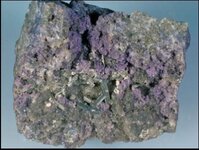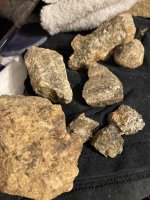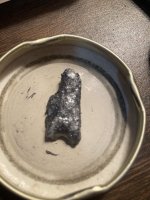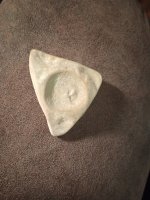FiresEye
Sr. Member
- Aug 17, 2010
- 322
- 5
So I've been reading a lot about tellurides and how they can contain up to 70% gold by weight, and that there's a specific process to remove the gold from them. While breaking some quartz ores down by hand, I've found some silvery metallic stuff which I think is Calaverite.. in quartz.... has anyone ever found any tellurides in the southeast USA? I live in North Georgia. I'm pretty sure that I have located a few telluride pockets, and havebeen doing a lot of picture looking and reading of what these rare minerals look like.
Also, for those of us who pan or sluice I have a question... Do you think the tellurides in the creek end up in the concentrates? I'd imagine they would. Also, if you crush rock and then pan, you have to be careful I think because the tellurides are much lighter than just placer gold. So moving on, here's some info I found on the web about tellurides...
It's long so scroll down and see what else is going on...
"""
This is only a primitive method of removing Gold out of Tellurides...
Basics; What you will need to do the job
1, 2 roasting pans [high temp] not aluminum foil type.
2, Standard table salt [equal amount to concentrate volume.
3, charcoal brickets.
4, outdoor area "well ventilated".
Step by step procedures...
1, classify your concentrates with a 20 mesh classifier...
2, mix the classified concentrates with equal amounts of salt...
3, put mix into a high temp roasting pan...
4. place pan with concentrates into a hot, well established coal bed...
5, leave in coal bed untill coals are completely consumed [overnite]...
What exactly is taking place...
Your concentrates have tellurides in them that according to our assay, are as much as 70% and as minimal as 30% in volume. You are heating the concentrates to an appx temp of 1000*F. What happens is that the salt and the heat enable the tellurides to burn off into a tellurium gas, leaving the chemically attached gold behind...
What will I see when done roasting...
1, actually nothing with the naked eye...
2, use at least a 10 power loop to get a view...
3, you are dealing with "micro gold" in very high concentrates...
4, if using a loop, you will see the remaning gold has kind of melted together into small globules...
Okay, now HOW DO I RECOVER IT...
1, get out your keene gravity bowl...
2, get it started up with a "GOOD SURFACTANT" in the water... [calgon]
3, NO soap w/lanolin or hand lotions in it...
4, remember you're dealing with ultra fine micro gold...
5, run your bowl with care and use caution, "don't get in a rush or get nuts"...
6, you will see GOLD in the gravity bowl, all will be in a 20 mesh and smaller...
What about the rest of the concentrates that I did not roast...
1, process them with your micro sluice or poop tube or gold wheel...
2, processing the remaining concentrates will get the free gold that did not pass thru the 20 mesh classifier...
Okay, I did all of this for what...
1, the Free Gold is running "according to assay" 1 troy ounce to each ton of classified concentrates...
2, the Gold Tellurides are yielding as much as 4-5 troy ounces per ton of classified concentrates...
3, how much is a ton of classified concentrates... [a 30 gallon garbage can in size]
4, or an average of 6-7, 5 gallon buckets of classified concentrates...
That's a hell of a lot of concentrates...
1, yup sure is, but so is 5-7 ounces of GOLD that you normally threw out...
:"""
So guys and gals, this sounds like the sort of thing people talk about roasting black sand to fracture the gold out of them, maybe it serves a dual purpose to roast the tellurides as well... I'm going to do this on a camping trip, way out in the woods.. Because I imagine the fumes from this could get nasty... and I have a garden in my backyard so I don't want all those contams in the near area.
So here's what else I found out
"The chemistry of gold tellurides is relatively complex with a series of identifiable minerals. The more common gold-bearing tellurides are sylvanite ((Au, Ag)Te4), calaverite ((Au, Ag), Te2) and petzite ((Au, Ag3)Te2) with krennerite (Au4 Ag Te4) and montbroyite (Au2 Te3) less common. Gold tellurides occurrence is widespread and is often associated with some free gold and sulphide minerals. The density of gold tellurides (8.0 - 10.0) are lower than native gold and the colour are less distinctive shades of white, grey and black."
Yep.. based on That^^ description, I've for sure got tellurides showing in my ores... No gold visible, but micro gold in abundance not only through mica free gold but the tellurides..
Check it out yourself and discuss how many tellurides you think you have in your cons, if tellurides are common or rare in Georgia, and what area you live and what kind of tellurides you suspect you have found...
Also, for those of us who pan or sluice I have a question... Do you think the tellurides in the creek end up in the concentrates? I'd imagine they would. Also, if you crush rock and then pan, you have to be careful I think because the tellurides are much lighter than just placer gold. So moving on, here's some info I found on the web about tellurides...
It's long so scroll down and see what else is going on...
"""
This is only a primitive method of removing Gold out of Tellurides...
Basics; What you will need to do the job
1, 2 roasting pans [high temp] not aluminum foil type.
2, Standard table salt [equal amount to concentrate volume.
3, charcoal brickets.
4, outdoor area "well ventilated".
Step by step procedures...
1, classify your concentrates with a 20 mesh classifier...
2, mix the classified concentrates with equal amounts of salt...
3, put mix into a high temp roasting pan...
4. place pan with concentrates into a hot, well established coal bed...
5, leave in coal bed untill coals are completely consumed [overnite]...
What exactly is taking place...
Your concentrates have tellurides in them that according to our assay, are as much as 70% and as minimal as 30% in volume. You are heating the concentrates to an appx temp of 1000*F. What happens is that the salt and the heat enable the tellurides to burn off into a tellurium gas, leaving the chemically attached gold behind...
What will I see when done roasting...
1, actually nothing with the naked eye...
2, use at least a 10 power loop to get a view...
3, you are dealing with "micro gold" in very high concentrates...
4, if using a loop, you will see the remaning gold has kind of melted together into small globules...
Okay, now HOW DO I RECOVER IT...
1, get out your keene gravity bowl...
2, get it started up with a "GOOD SURFACTANT" in the water... [calgon]
3, NO soap w/lanolin or hand lotions in it...
4, remember you're dealing with ultra fine micro gold...
5, run your bowl with care and use caution, "don't get in a rush or get nuts"...
6, you will see GOLD in the gravity bowl, all will be in a 20 mesh and smaller...
What about the rest of the concentrates that I did not roast...
1, process them with your micro sluice or poop tube or gold wheel...
2, processing the remaining concentrates will get the free gold that did not pass thru the 20 mesh classifier...
Okay, I did all of this for what...
1, the Free Gold is running "according to assay" 1 troy ounce to each ton of classified concentrates...
2, the Gold Tellurides are yielding as much as 4-5 troy ounces per ton of classified concentrates...
3, how much is a ton of classified concentrates... [a 30 gallon garbage can in size]
4, or an average of 6-7, 5 gallon buckets of classified concentrates...
That's a hell of a lot of concentrates...
1, yup sure is, but so is 5-7 ounces of GOLD that you normally threw out...
:"""
So guys and gals, this sounds like the sort of thing people talk about roasting black sand to fracture the gold out of them, maybe it serves a dual purpose to roast the tellurides as well... I'm going to do this on a camping trip, way out in the woods.. Because I imagine the fumes from this could get nasty... and I have a garden in my backyard so I don't want all those contams in the near area.
So here's what else I found out
"The chemistry of gold tellurides is relatively complex with a series of identifiable minerals. The more common gold-bearing tellurides are sylvanite ((Au, Ag)Te4), calaverite ((Au, Ag), Te2) and petzite ((Au, Ag3)Te2) with krennerite (Au4 Ag Te4) and montbroyite (Au2 Te3) less common. Gold tellurides occurrence is widespread and is often associated with some free gold and sulphide minerals. The density of gold tellurides (8.0 - 10.0) are lower than native gold and the colour are less distinctive shades of white, grey and black."
Yep.. based on That^^ description, I've for sure got tellurides showing in my ores... No gold visible, but micro gold in abundance not only through mica free gold but the tellurides..
Check it out yourself and discuss how many tellurides you think you have in your cons, if tellurides are common or rare in Georgia, and what area you live and what kind of tellurides you suspect you have found...
Upvote
2



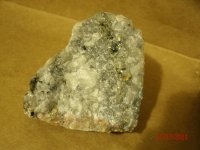
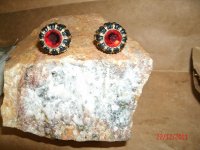


 Try looking at all the micro gold under the microscope,... Melt your micro cons with flux ,... Then a cupel for final purification.
Try looking at all the micro gold under the microscope,... Melt your micro cons with flux ,... Then a cupel for final purification. 
